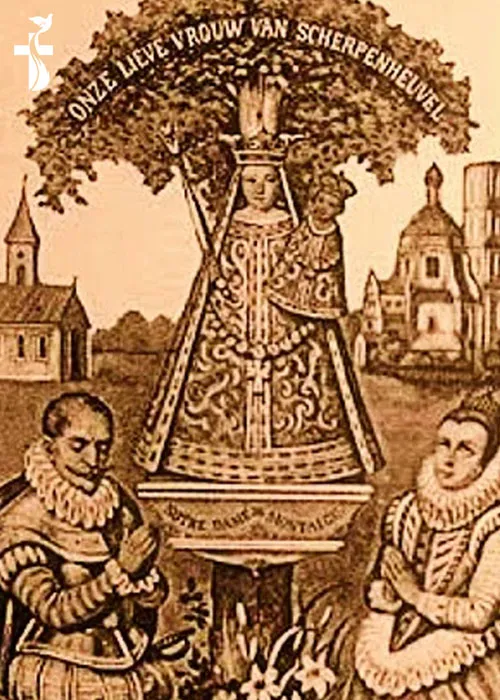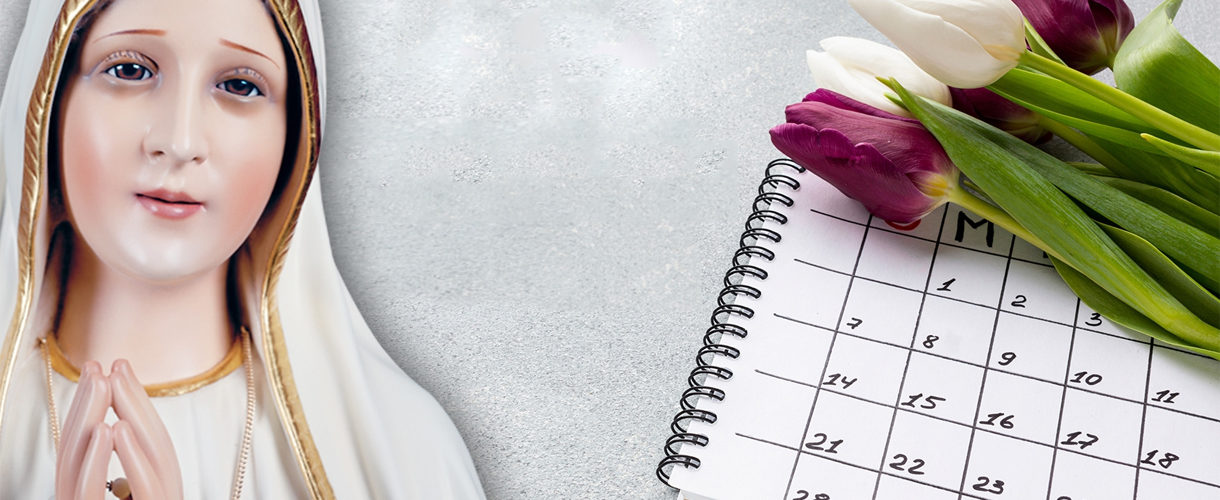
Our Lady Of Jasna Gora
Country :
Year :
Northeast of the ancient city of Krakow, Poland is the small town of Czestochowa. To every Pole the name means but one thing—Mary’s Sanctuary. On a nearby hill the Monks of St. Paul the Hermit have a monastery. In the chapel of Our Lady in their monastery church, is the famous painting of the Blessed Virgin. This painting of the Mother of God holding the Child Jesus in her arms, bears the title, Our Lady of the Bright Hill (Jasna Gora) she is the Patroness and Protectress of the Poles; the Queen of the Crown of Poland.
The history of Our Lady of Czestochowa is the history of Poland. Tradition holds that this picture of Mary was done by St. Luke the Evangelist on a piece of wood cut from the table of the Last Supper. It was the Christians of Jerusalem who presented this picture to St. Helen, the mother of Constantine. She in turn gave it to her son and so it was put in his palace at Constantinople. The salvation of this city while besieged by the Saracens, was ascribed to Our Lady’s intercession. The Byzantine Emperors showed great devotion for this picture and were able to hide it during the Iconoclast (breaking of images) persecution, thus saving it from destruction at the hands of the heretics who tried to destroy all statues and images. In 989, upon the marriage of Princess Anna, the sister of the Emperor, to Prince Vladimir of Kiev, the picture was a wedding gift taken to her, to the Ukraine.
In the fourteenth century the picture was again in danger due to the Tartar raids. In a dream the wish of Our Lady was made known to Prince Ladislaus of Opol and in fulfillment of it, the holy image was taken to Jasna Gora. At that time the monks of St. Paul the Hermit were invited to come from Hungary and be the custodians of the shrine. During the Hussite persecution, heretics plundered the monastery and the church. They hurled the precious image to the ground and it was broken into three pieces. But when they tried to carry it off, the wagon bearing the image could not be moved. In rage one of them drew a sword and struck our Lady’s cheek twice. As he raised his arm a third time he fell dead on the spot. Seeing this, his comrades fled in terror.
Under King Ladislaus II of Poland a commission of artists restored the painting but no effort on their part could remove the sword strokes which remain to this day. These artists at the time placed a silver background over the upper part of the picture on which five scenes were engraved. These are: the Annunciation, the Adoration of the Christchild, the Scourging at the Pillar, Christ mocked by the soldiers, and St. Barbara, to whom Poles had a great devotion.
The Kings of Poland were especially devoted to Our Lady of the Bright Hill; at her shrine they, with their people sought intercession in all needs of the nation. In danger from the Turks, during invasion by Sweded, under siege by Prussians, Austrians and Russians, after the partition of Poland in 1795, During the German invasion of 1939, and today under Communism, the hearts of Poles have ever turned to our Queen. Her shrine at Jasna Gora is for them a symbol of their faith and hope.
On May 7, 1957, Polish Catholics entered the first year of the “GREAT NOVENA” as their nine-year program of prayer is called. It was in 1956 that a million Polish pilgrims visited the shrine and out of that pilgrimage grew the Jasna Gora Vow, to prepare for the 1000 anniversary of Poland’s conversion, known as the Sacred Millenium, by nine years of prayer and work for a Christian life. Thus today, even though the picture of Our Lady of Czestochowa is framed in somber black, the Polish Catholics turn once again to Mary and hold themselves loyal subjects of the Queen of the Crown of Poland, Our Lady of Jasna Gora or Czestochowa.



